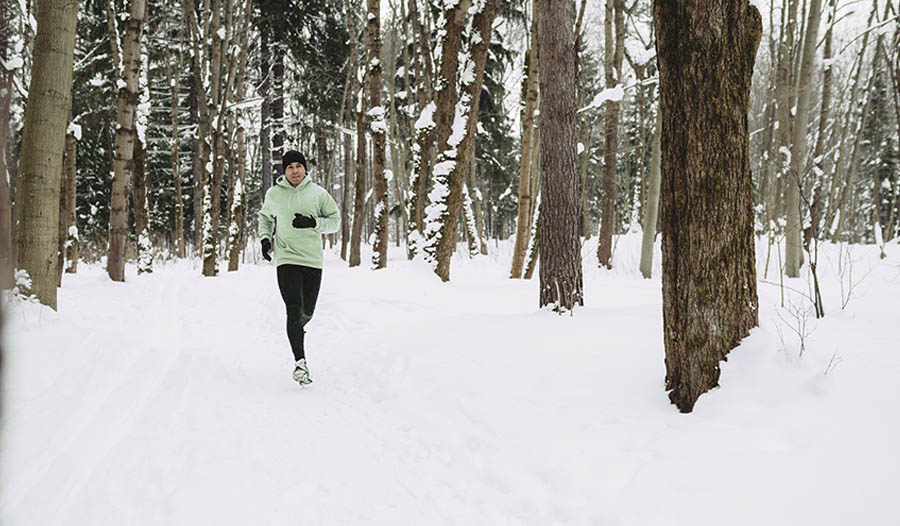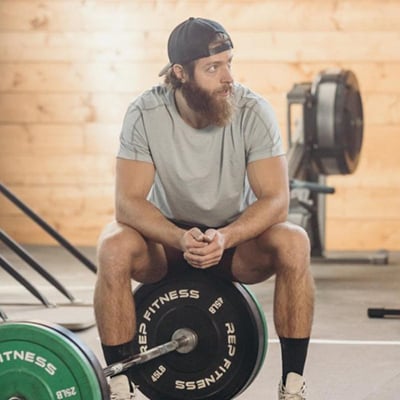4 Keys to Successful Cold Weather Workouts
DISCLAIMER:This blog does not intend to provide diagnosis...

Cold weather workouts are great for a couple of reasons. First, they’re a great way to burn the calories that we’re consuming while we spend more time inside during the frigid months. Second, the holidays bring great-tasting foods with extra calories, so there’s no doubt that you’ll have plenty of energy to burn.
Cold-weather workouts need slight adjustments compared to those during the warmer months in the year. Here are a few ways that I, as a strength coach, structure cold-weather workouts for my clients.
1. Warm Up Your Muscles
Make it a goal to warm up longer. The temperature drop outside can result in tight muscles and less flexible joints. A tight and stiff muscle can result in decreased performance in the gym, increased stiffness post-workout, and raise the potential of injury. Warming up plays a crucial role in combating the colder climate change.
No matter what you’re doing in the gym, start each workout with at least five to ten minutes of light cardio, whether it be jogging, walking on an incline, cycling or jumping rope. This will get the blood flowing and make your muscles warm and more elastic. After light cardio, add in some dynamic stretches to activate and engage your muscles, which can improve your range of motion. Some good examples of dynamic stretches are walking lunges, hip swings, arm circles, and monster walks with a resistance band. Remember, dynamic stretching means moving while you stretch, as opposed to static stretching, which means holding a stretch for an extended amount of time.
2. Work Out Longer
Let’s be honest. The hardest part of working out in colder weather is getting out of your warm cozy bed, putting down your nice hot coffee or tea, and actually making it to the gym. Maybe you were able to get yourself to the gym five or six days a week in the summer, but now, just the thought of walking through the cold has dropped your gym frequency to three or four days. Factor in this lower workout frequency with your overall decrease in physical activity—less walking outside, no laps in the pool, shorter runs with Fido in the dog park—and it’s easy to see why your summer body goes into hibernation mode during the colder months.
To avoid letting the season get the best of you, make your workouts longer. If you’re hitting the gym less days, then add a few extra exercises with additional sets and reps, along with some added cardio. If you’re having trouble sustaining your tempo in these longer sessions, then try a pre-workout supplement formula with BCAAs and caffeine to help fuel your muscles (BCAAs) and your mind (caffeine).
3. Set a Seasonal Goal
The end of the year is a great time to make a few realistic workout and health-related goals. The holidays are great because they bring everyone together, but they can also be a time of overindulgence. Family dinners, Christmas cookies, and Thanksgiving pies can add up quick, so implementing a health-focused game plan for the winter months is a great way to keep you moving forward while enjoying the holidays.
Creating monthly or bi-monthly check-ins for a long-term winter goal is a great way to keep you on track, but also not completely limit yourself during the holiday season. Whether it’s a weight, body composition or strength goal, a constructive timeline can be useful for ensuring success. For example, if you’re eating well and working out consistently for a majority of the time outside of the holiday celebrations, then when those get-togethers roll around you can relax a bit more and enjoy without the risk of facing heavy setbacks.
4. Be Your Own Sunshine
In the colder months, we’re more likely to be outside less. What does this mean? It means that we need to be increasingly more mindful of giving the body the vitamins and minerals it needs. Which vitamin will the body more than likely be deficient in? Vitamin D, aka the “sunshine vitamin.” This vitamin plays a key role in multiple processes in the body including our immune health, hormone regulation and mental health.
In a 2014 study published in the Journal of Science and Medicine In Sport, researchers suggested that ballet dancers who supplemented with Vitamin D throughout the winter months saw an increase in performance and had fewer injuries. On top of vitamin D, it may not be a bad idea to add extra antioxidants to your daily regimen since the body will more than likely be depleted after long and sweaty gym sessions.
Cooler months may not be your favorite time of year, but it doesn’t have to derail your fitness progress. There are multiple ways to modify your workouts and day-to-day routine to have your best season yet. As humans, our bodies change and need different things with each new season, so don’t forget to adjust your time spent in the gym as well.
References:
- Wyon MA, e. (2018). The influence of winter vitamin D supplementation on muscle function and injury occurrence in elite ballet dancers: a controlled study. - PubMed - NCBI . Ncbi.nlm.nih.gov. Retrieved 28 October 2018, from https://www.ncbi.nlm.nih.gov/pubmed/23619160

 By Jake Boly, CSCS
By Jake Boly, CSCS


